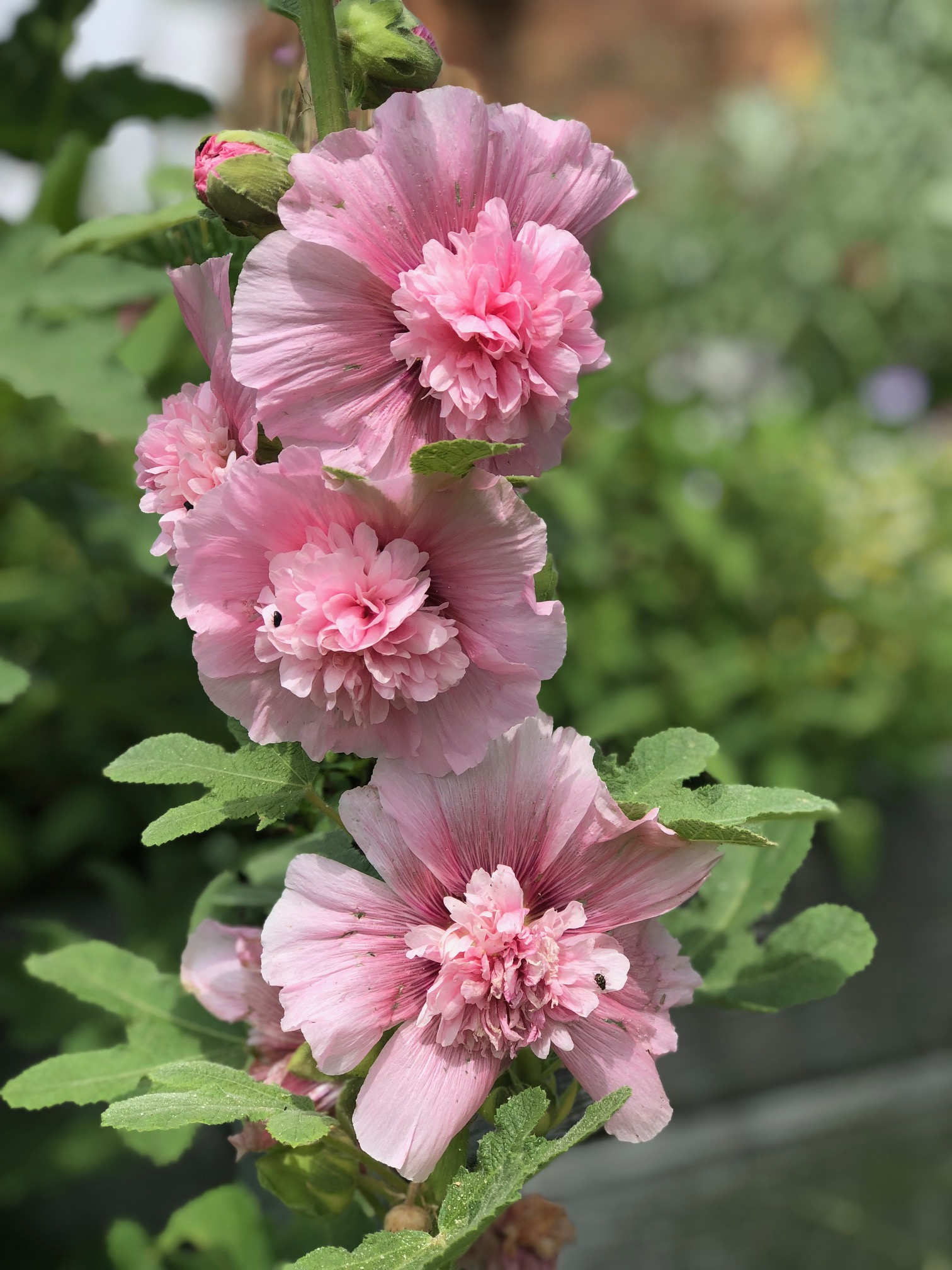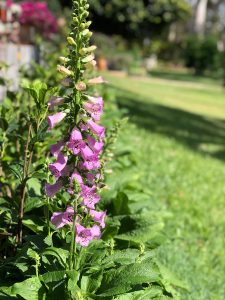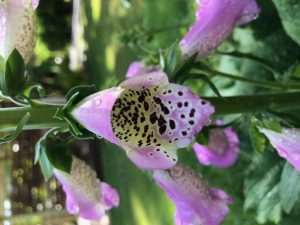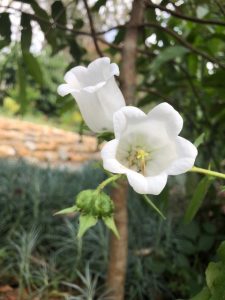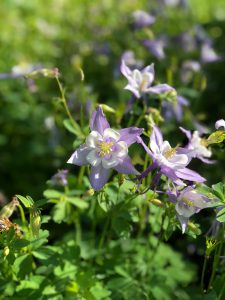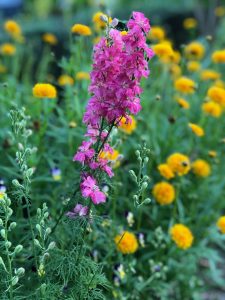I love the sensual pleasures of a garden. Fragrance, colour, silky smooth petals, and the sheer unadulterated pleasure of just growing things. It’s exciting, gratifying and so rewarding-most of the time.
Here is the story of my garden giants. How they are at once gratifying and so frustratingly disappointing.
A trip to the UK and the beautiful gardens of Devon and Cornwall some years back, created a longing to grow those spectacular tall border plants that thrive in the mild spring and summer conditions. (ha! We are in the subtropics with heat, humidity and storms. Don’t we always want what we can’t have?)
So, I became fixed upon growing Foxgloves, Delphiniums, Hollyhocks, Lilliums, Campanula, Columbines, Lupins. I’ve made a start, growing some of those from seed and testing out the conditions and the seasons here in our little piece of paradise. Even if the pack tells me it’s not possible in the subtropics, I’m still giving it a go. After all, I had a chef from Tasmania tell me she was growing Bougainvillea, so heck! Why not try Foxgloves and Hollyhocks up here?
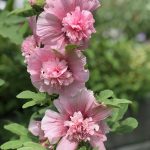
It started with the Foxies. Yes, they’ve grown terrifically from seed planted in early to mid winter. Beware they are very toxic though and not at all suited to edible flowers/cakes or the like. This year I was able to pick up some Foxglove plugs. Plugs are miniscule seedlings with a tiny 1 cm root ball. They’ve done beautifully filling up space in the new bed as the Gardenias fill out.
We’ve also had a few years success now with Hollyhocks. I first purchased a pack of Sumer Carnival Hollyhock seeds from Eden Seeds online. www.edenseeds.com.au They have a few different Hollyhocks including double black ones that were developed in Spain by fabric dyers, for their colour, medicinal qualities, for food and for their fabulousness. (see the story here: https://www.tesselaar.net.au/product/2870-hollyhock-the-watchman )
Giants of the garden
I must warn you-Hollyhocks are tall. They will tower above your head.
The spikes of flowers are spectacular and are the most photographed flowers in our garden at Garden Parties. You can’t plant them under your washing line as they will grow through it. You can’t grow them out in the middle of a windy field unless you stake them or the wind will blow them over, but you can grow them in a spot where you want to enjoy the spectacle of majestic spires.
You can eat these flowers as they are a member of the hibiscus family which are edible. I cook them into baked desserts and slice them into salads. I’ve even made a hair rinse from the leaves by simmering a few leaves, straining, cooling and diluting it. It makes a lovely hair softener.
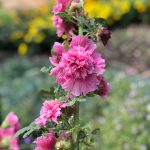
Insect pests
But, while they look sensational in their rainbow of colours, some singles and some doubles or peony forms, they do have one small issue here in the subtropics. Hibiscus beetles love them. This small black beetle is sleek and handsome. It has a short pupal stage in the soil then ascends into the plant, and starts its damage in the flowers, eating pollen and damaging the petals and seriously shortening the life of the flower. It seems they like the single white and pale pink flowers most of all.
If you are not intending to eat the flowers, there are a couple of organic means of control. Eco oil and Ecofend sprays will help to control numbers but will probably not kill the whole beetle population.
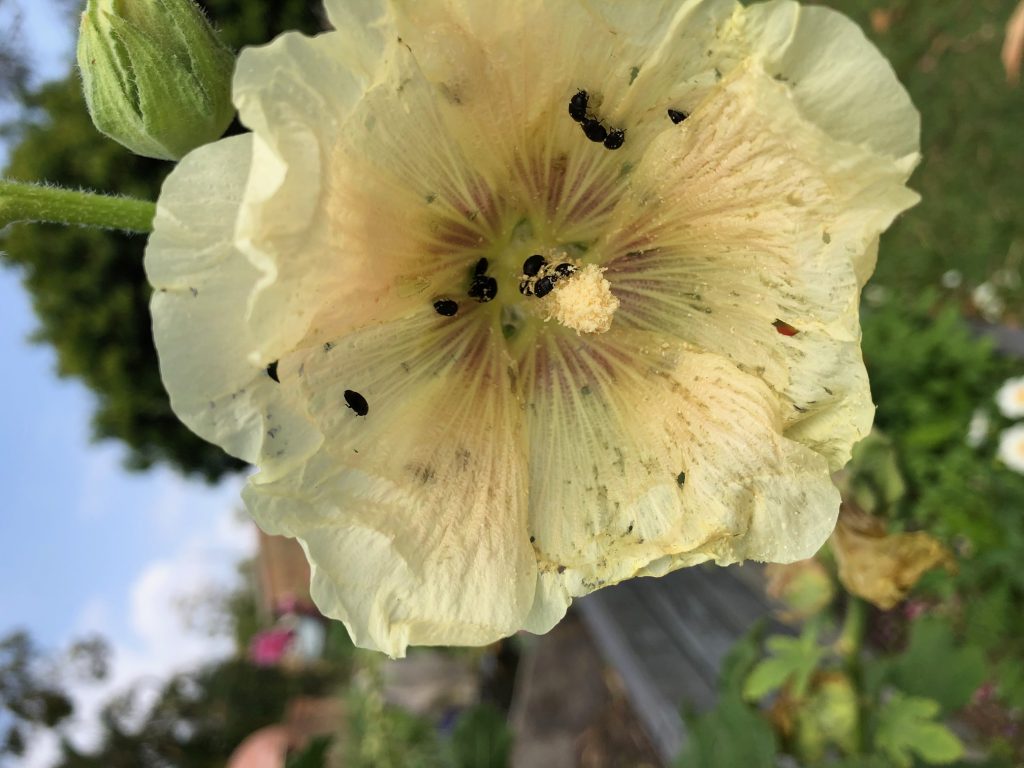
As for the others…
Those other tall English type plants I mentioned before are making inroads into the garden too. By experimenting with where and when I plant, I’ve found I can grow quite a range. This year, delphiniums were so sweet when planted in autumn and transplanted into the cool Labyrinth Garden. I’ve let them seed in the hope they will self seed for next season.
The Campanula which look like upright bells, I bought as tiny plugs once again and they have been rather magnificent. They loved growing in part shade amongst the rosemary hedge which gave them support. The white really is quite striking in the garden. I’ve saved seed for next autumn planting and will be chasing seed of some other colours too.
The Aquilegia (Columbines) grew a bit shorter than expected, I guess due to warmer conditions and slightly out of kilter seasonal planting, as they grew in the shorter day length winter season, but I’ve been delighted with the number of flowers. When we were in Slovenia this year, as we hiked through fields in the high mountains, there they were, growing wild. I was so happy I would be coming home to them in my garden. They are highly poisonous, so don’t be tempted to grow them for cake decorating. They are a little like foxgloves in that they are cardiogenic and will cause palpitations and even heart attack. Not an edible flower, but so gorgeous!
So what’s on for next season? Come autumn and winter I’ll be planting seed of Lupins. Ooh I can’t wait. Now they are truly spectacular. I think I’ll put them in the labyrinth garden again and let their tall spires wave at me from a distance.



